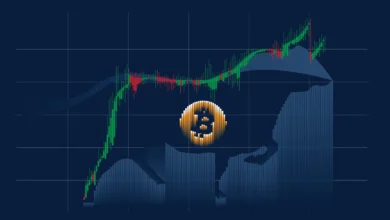
Bitcoin Futures Sep 2025 Stock Price News
Bitcoin futures have emerged as one of the most significant financial instruments in the cryptocurrency ecosystem, offering traders and institutional investors regulated exposure to Bitcoin price movements without directly holding the digital asset. As of the latest data, Bitcoin Futures for September 2025 (BTC=F) are trading at $115,390.00, showing a -1.60% decline, reflecting the dynamic nature of cryptocurrency markets.
The September 2025 Bitcoin futures contract represents a crucial milestone in the evolution of cryptocurrency derivatives trading. These standardized contracts, primarily traded on the Chicago Mercantile Exchange (CME), have become essential tools for portfolio diversification, risk management, and price discovery in the digital asset space. The intricacies of BTC futures trading are vital for both seasoned investors and newcomers looking to capitalize on Bitcoin’s price volatility.
Bitcoin futures contracts operate as agreements to buy or sell Bitcoin at a predetermined price on a specific future date. Unlike spot Bitcoin trading, futures contracts provide leverage opportunities, enabling traders to control larger positions with smaller capital requirements. The CME Bitcoin futures market has grown exponentially, with institutional participation driving significant trading volumes and market liquidity.
The September 2025 expiration date places this contract in a particularly interesting position, as market analysts anticipate substantial Bitcoin price movements throughout 2025. Bitcoin price predictions for 2025 range between $100,000 and $150,000, depending on ETF inflows, regulatory clarity, and macroeconomic conditions, making the September contract strategically important for long-term positioning.
Bitcoin Futures Fundamentals
What Are Bitcoin Futures
Bitcoin futures are derivative contracts that derive their value from the underlying Bitcoin asset. These standardized agreements allow traders to speculate on Bitcoin’s future price direction without owning the actual cryptocurrency. The CME Bitcoin futures market operates under strict regulatory oversight, providing institutional-grade security and transparency that traditional spot crypto exchanges may lack.
The BTC=F ticker symbol specifically refers to the front-month Bitcoin futures contract, which rotates quarterly. Each contract represents 5 bitcoins, making it accessible to a broader range of institutional and retail participants. The cash-settled nature of these contracts means that physical Bitcoin delivery doesn’t occur; instead, positions are settled in US dollars based on the CME CF Bitcoin Reference Rate.
Contract Specifications and Trading Mechanics
Bitcoin futures contracts on CME follow specific parameters that traders must understand. The September 2025 contract has a standardized size of 5 bitcoins per contract, with price quotations in US dollars per bitcoin. The minimum price fluctuation (tick size) is $5 per bitcoin, equivalent to $25 per contract.
Trading hours for Bitcoin futures extend beyond traditional market hours, operating nearly 24/7 except for brief maintenance windows. This continuous trading capability aligns with the global, round-the-clock nature of cryptocurrency markets, allowing international participants to trade during their preferred time zones.
Margin requirements for Bitcoin futures vary based on market volatility and broker policies. Initial margins typically range from 35% to 50% of the contract value, while maintenance margins are slightly lower. These leverage opportunities enable traders to control substantial Bitcoin exposure with relatively modest capital commitments.
Current Market Analysis and Price Dynamics

September 2025 Contract Performance
The current trading price of $115,390 for the September 2025 Bitcoin futures reflects the market’s expectations for Bitcoin’s value at contract expiration. This pricing incorporates various factors, including interest rates, storage costs, and market sentiment regarding Bitcoin’s long-term trajectory.
Technical analysis of the September contract reveals important support and resistance levels. Analysis shows Bitcoin CME Futures are currently trading inside a falling wedge pattern on the 4-hour timeframe, sitting at a key decision point with liquidity both above and below. This technical formation suggests potential for significant price movement in either direction.
Volume analysis indicates growing institutional interest in the September 2025 contract. Recent data shows Bitcoin CME Futures volume at 6.59K with a 2.03% price increase in the past 24 hours, demonstrating active participation from both retail and institutional traders.
Market Sentiment and Institutional Adoption
Institutional participation continues to drive Bitcoin futures market development. CME Group offers efficient price discovery in transparent futures markets with potential margin offsets between Bitcoin futures and options, making it attractive for sophisticated trading strategies.
Exchange-traded fund (ETF) inflows have significantly impacted Bitcoin futures pricing. The correlation between spot Bitcoin ETF activity and futures market behavior has created new arbitrage opportunities and enhanced overall market efficiency. Advancements in financial products, especially ETF flows, could sustain Bitcoin’s bullish momentum.
Corporate adoption trends also influence futures pricing. As more companies add Bitcoin to their treasury reserves, the supply-demand dynamics shift, potentially supporting higher futures prices. This institutional embrace has legitimized Bitcoin as a store of value and inflation hedge.
Price Predictions and Expert Analysis
2025 Price Forecasts
Cryptocurrency analysts have provided varied but generally optimistic projections for Bitcoin in 2025. Analysts expect Bitcoin’s average price to fluctuate between a maximum of $121,440.85 and a minimum of $45,871.41 in 2025, indicating substantial volatility expectations.
Technical analysis models suggest even higher potential targets. Bitcoin is forecasted to trade within a range of $116,271 and $144,825, with potential to reach $126,306 by September 29, 2025, if it reaches the upper price target. These projections align with the current September futures pricing.
VanEck’s research team has provided particularly bullish forecasts. VanEck maintains its $180K BTC price target by year-end 2025, suggesting significant upside potential for current futures positions.
Factors Influencing Price Movement
Regulatory developments remain crucial for Bitcoin futures pricing. Clearer regulatory frameworks in major jurisdictions could reduce uncertainty premiums built into current prices. Central bank policies, particularly regarding interest rates and quantitative easing measures, also significantly impact Bitcoin’s attractiveness as an alternative store of value.
Technological advancements in the Bitcoin network, including Lightning Network adoption and institutional custody solutions, support longer-term price appreciation. Mining dynamics, especially around halving events, create supply constraints that historically drive price increases.
Macroeconomic factors such as inflation rates, currency debasement concerns, and geopolitical tensions contribute to Bitcoin’s appeal as a hedge asset. These fundamental drivers often create sustained trends that futures markets anticipate and price in advance.
Trading Strategies and Risk Management
Popular Futures Trading Strategies
Contango and backwardation patterns in Bitcoin futures markets create arbitrage opportunities for sophisticated traders. When futures trade at premiums to spot prices (contango), traders can potentially profit by selling futures and buying spot Bitcoin. Conversely, backwardation scenarios favor buying futures while shorting spot positions.
Spread trading strategies involve simultaneous positions in different contract months. The calendar spread between September 2025 and earlier expiration contracts can provide lower-risk exposure to time decay effects and changing market conditions. These strategies often appeal to institutional investors seeking reduced volatility.
Hedging strategies using Bitcoin futures allow spot Bitcoin holders to protect against adverse price movements. Portfolio managers holding significant Bitcoin positions can sell futures contracts to create synthetic short exposure, maintaining economic upside while limiting downside risk.
Risk Management Considerations
Leverage risks associated with Bitcoin futures trading require careful position sizing and margin management. The high volatility of Bitcoin can quickly lead to margin calls if positions aren’t properly monitored. Traders should never risk more capital than they can afford to lose entirely.
Liquidity considerations become particularly important during periods of high market stress. While CME Bitcoin futures generally maintain good liquidity, extreme market conditions can lead to wider bid-ask spreads and potential execution challenges.
Regulatory risks remain present despite the regulated nature of CME futures. Changes in government policies regarding cryptocurrency trading could impact market access and contract specifications. Traders should stay informed about evolving regulatory landscapes.
Market Outlook and Future Developments

Long-term Market Trends
Bitcoin has recovered nearly 4% from recent lows, fueled by strong institutional inflows and renewed corporate accumulation, suggesting underlying strength in the market structure. This institutional support provides a foundation for sustained futures market growth.
Technological integration of Bitcoin into traditional financial systems continues to advance. Central bank digital currencies (CBDCs) development paradoxically may increase Bitcoin’s appeal as a decentralized alternative. The September 2025 timeframe allows sufficient time for these trends to mature and impact pricing.
Global adoption metrics show increasing Bitcoin acceptance across various jurisdictions. Payment integration, merchant adoption, and regulatory clarity in developing markets could drive additional demand supporting higher futures prices.
Potential Market Catalysts
Bitcoin ETF developments remain a significant catalyst for futures markets. Additional ETF approvals in major jurisdictions could increase institutional access and drive sustained buying pressure. The options on Bitcoin ETFs further enhance institutional toolkit capabilities.
Corporate treasury adoption trends may accelerate if economic uncertainties persist. MicroStrategy’s Bitcoin strategy has inspired other corporations to consider similar allocations. The September 2025 timeline provides an adequate opportunity for additional corporate announcements.
Lightning Network growth and layer-2 scaling solutions could enhance Bitcoin’s utility as both a store of value and medium of exchange. These technological improvements support fundamental value propositions underlying futures pricing models.
Also Read: Bitcoin Future Price Analysis Today Expert Predictions and Market Insights for 2025
Conclusion
Bitcoin Futures September 2025 represent a compelling opportunity for investors seeking regulated exposure to Bitcoin price movements. With current pricing at $115,390, the contract reflects market expectations of continued Bitcoin appreciation while acknowledging inherent volatility risks.
The convergence of institutional adoption, regulatory clarity, and technological advancement creates a supportive environment for Bitcoin futures trading. CME’s regulated platform provides the security and transparency institutional investors require, while growing market liquidity enhances execution capabilities for all participants.
Risk management remains paramount in Bitcoin futures trading. The leverage capabilities and volatility characteristics require a disciplined approach and appropriate position sizing. Successful futures trading demands continuous monitoring of market conditions, regulatory developments, and macroeconomic factors.
Long-term prospects for Bitcoin and its futures markets appear constructive, supported by institutional adoption trends, technological improvements, and growing global acceptance. The September 2025 contract provides traders with a strategic vehicle for participating in Bitcoin’s potential appreciation while managing risk through regulated derivatives markets.
Investors considering Bitcoin futures positions should conduct thorough research, understand contract specifications, and maintain appropriate risk management protocols. The dynamic nature of cryptocurrency markets requires continuous education and adaptation to changing market conditions.







